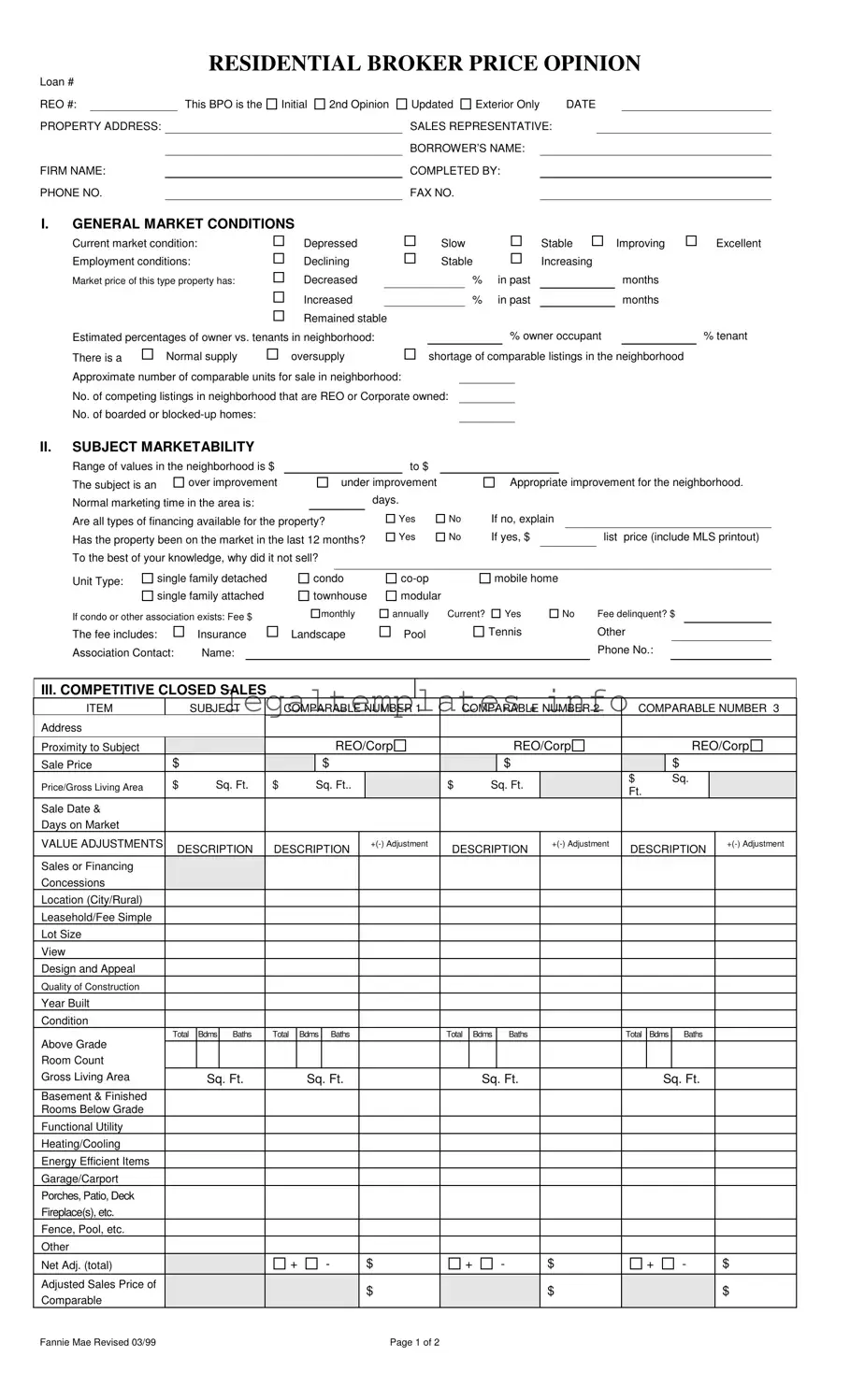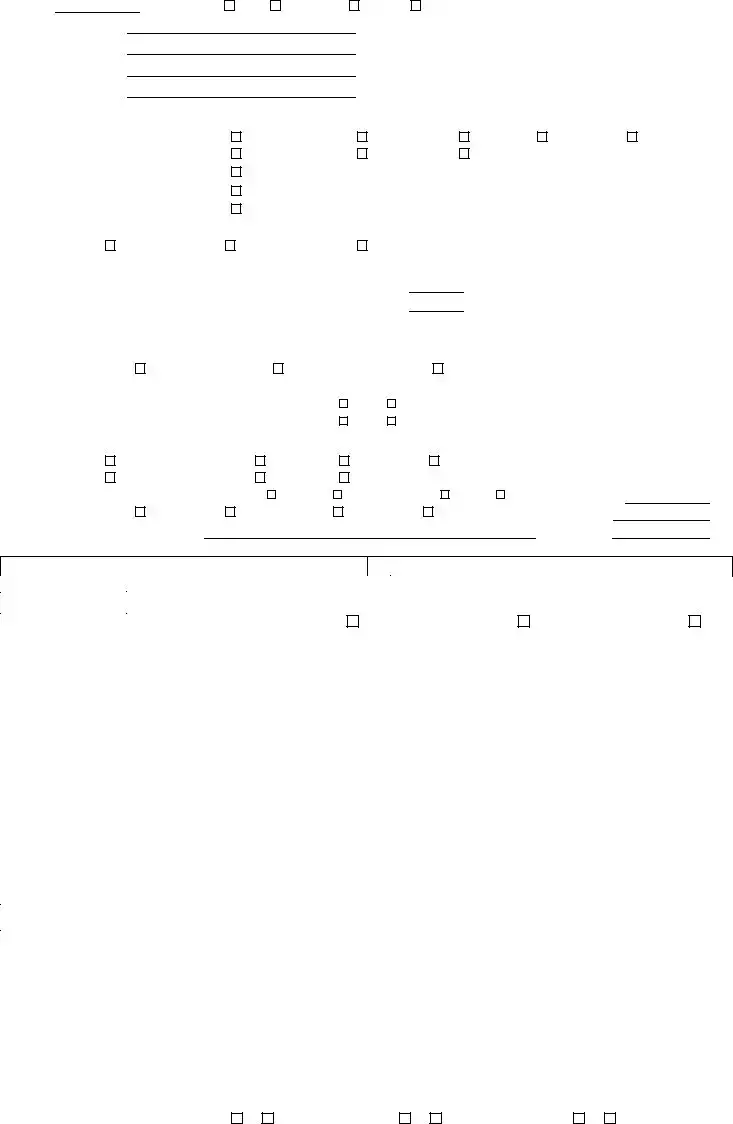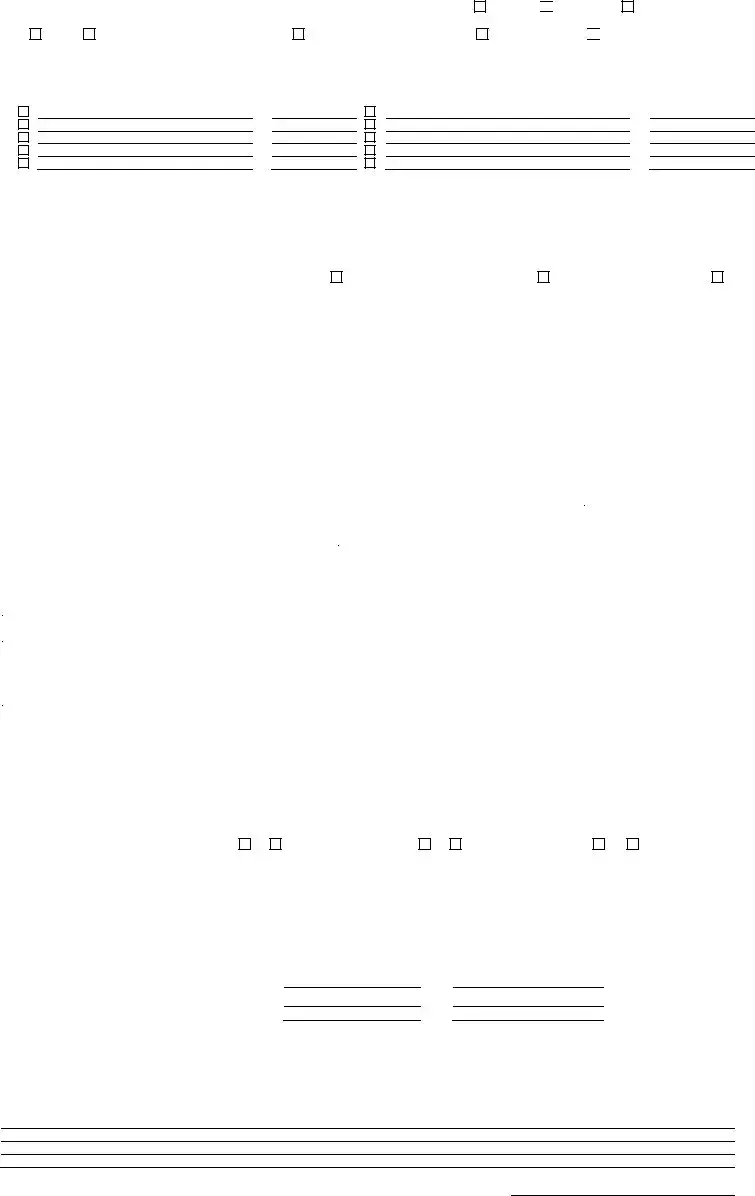The Comparative Market Analysis (CMA) is similar to the Broker Price Opinion (BPO) form as both provide an estimate of a property's value based on current market conditions. Like the BPO, the CMA compares the subject property to similar properties in the area that have recently been sold, are currently on the market, or were on the market but did not sell. This comparison helps in understanding what potential buyers might be willing to pay for a property. Both documents are essential for setting a competitive and fair market price.
Appraisal Reports share similarities with the BPO form by evaluating a property's market value through detailed inspections and comparisons to similar properties. An appraiser conducts an on-site visit to examine the property's condition and then assesses its value by considering several factors, such as location, condition, and sales of comparable homes in the area. However, unlike BPOs, which are often performed by real estate agents, appraisals can only be conducted by licensed professionals.
The Property Condition Report highlights a property's physical state, similarly to how the BPO form includes a section for repairs needed to bring the property to marketable condition. This report provides detailed information about the property's structure, systems, and components, identifying any defects or maintenance issues. Both documents serve as critical tools for potential investors or buyers to understand the condition of the property before making decisions.
An Inspection Report, much like the BPO's section on property condition and needed repairs, identifies any issues with the property that could affect its value. Conducted by a professional home inspector, this report covers the property's major systems and structural components. Buyers often use this report to renegotiate the purchase price or request repairs based on the findings, making it an influential document in the buying process.
The Home Equity Report is somewhat similar to the BPO in that it determines the current value of a property for a homeowner interested in assessing their equity or considering a home equity loan or line of credit. This report takes into account recent market trends and comparable sales, helping homeowners understand how much of their mortgage has been paid off relative to the market value of their home.
Listing Agreements incorporate key elements found in the BPO form, such as property details and recommended listing price, forming a contract between a property owner and a real estate agent. This agreement authorizes the agent to list, market, and sell the property on behalf of the owner. The agreed-upon price is often informed by a BPO or similar market analysis to ensure the listing price is competitive within the current market.
The Pre-listing Package, similar to the BPO, contains comprehensive information about a property and its market conditions aimed at potential sellers. It often includes a comparative market analysis, marketing strategy, and suggested listing price, helping sellers make informed decisions about listing their property. This package ensures that sellers have all necessary information to enter the market confidently.
The Purchase Agreement, while primarily a legal document outlining the terms and conditions of a property sale, sometimes reflects the valuation found in a BPO, especially in terms of the agreed selling price. This agreement signifies the buyer's intent to purchase the property at a specified price, which ideally aligns with the current market value as determined by the BPO or a similar valuation tool.
Loan Servicing Reports can resemble the BPO form in the context of assessing a property’s value during mortgage servicing activities such as mortgage refinancing or loan modifications. These reports often require an up-to-date valuation of the property to ensure the modified loan values are in alignment with the property's current market value, safeguarding the interests of both the lender and borrower.
Finally, the Real Estate Owned (REO) Property Report, like the BPO, assesses the value of bank-owned properties that failed to sell at foreclosure auctions. These reports focus on determining the best possible price to list these properties on the market, considering their condition and local market conditions. Banks often use BPOs to inform the pricing strategy for REO properties, aiming to recuperate as much of the unpaid loan balance as possible.




 Unknown
Unknown
 Investor
Investor